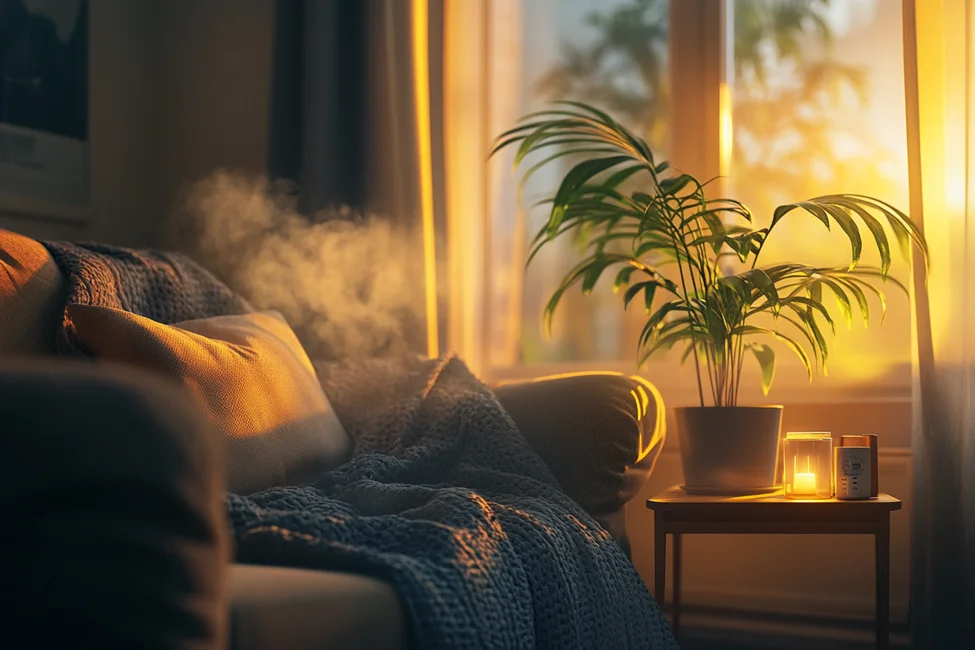For those seeking advanced solutions, energy-efficient humidifiers for dry air can offer additional features to enhance your indoor air quality.
Why Humidity Control Matters
Humidity levels in your home affect more than just comfort. They can influence health, preservation of furniture, and energy efficiency:
- Health Benefits: Proper humidity levels can alleviate dry skin, reduce allergy and asthma symptoms, and minimize respiratory issues.
- Furniture Preservation: High or low humidity can warp wooden furniture and damage paint or wallpaper.
- Energy Efficiency: Adequate humidity can make lower temperatures feel warmer, potentially reducing heating costs.
Key Features of Humidifiers for Large Rooms
When selecting a humidifier for a large room, consider the following features:
Coverage Area
The first consideration should be the coverage area. Large rooms require energy-efficient air purifier options that can handle expansive spaces, typically over 500 square feet. Check the manufacturer’s specifications to ensure the humidifier can meet your room’s requirements.
Water Tank Capacity
A larger water tank means less frequent refills, which is especially important for extensive coverage. Look for tanks that hold at least 1.5 gallons to ensure continuous operation over long periods.
Humidity Control Settings
Advanced models offer multiple humidity control settings. Features like a built-in humidistat can automatically adjust the moisture output to maintain the desired humidity level, providing better efficiency and comfort.
Noise Level
For shared spaces or bedrooms, a quiet operation is crucial. Ultrasonic humidifiers are typically quieter than evaporative models, making them ideal for noise-sensitive environments.
Maintenance and Filter Requirements
Consider the maintenance involved. Some models require regular filter changes, which can add to the cost and effort. Filterless models or those with washable filters can reduce ongoing maintenance.
Types of Humidifiers for Large Rooms
Understanding the different types of humidifiers can help in choosing the right one for your needs:
Ultrasonic Humidifiers
These models use ultrasonic vibrations to create a cool mist, making them energy-efficient and quiet. They are ideal for bedrooms and offices where noise can be a concern.
Evaporative Humidifiers
Evaporative humidifiers use a fan to draw air through a moistened filter. They are generally more affordable and can effectively humidify large spaces, but they tend to be noisier than ultrasonic types.
Steam Vaporizers
Also known as warm mist humidifiers, these models boil water to produce steam, which is then cooled before release. They can help reduce bacteria and allergens in the air but consume more energy.
Top Tips for Using Humidifiers in Large Spaces
- Placement: Position the humidifier in a central location to ensure even moisture distribution. Avoid placing it near walls or furniture to prevent moisture damage.
- Water Quality: Use distilled or demineralized water to minimize mineral buildup and white dust, especially if using an ultrasonic humidifier.
- Regular Cleaning: Clean the humidifier regularly to prevent mold and bacteria growth. Follow the manufacturer’s instructions for cleaning frequency and procedures.
- Monitor Humidity Levels: Use a hygrometer to monitor indoor humidity. Aim for a range of 30-50% for optimal comfort and health.
Final Advice for Choosing Your Next Humidifier
Choosing the right humidifier for large rooms involves understanding your specific needs and the features that best meet them. Consider factors such as coverage area, water capacity, and maintenance requirements. Whether you opt for an ultrasonic, evaporative, or steam vaporizer model, each offers distinct advantages that can effectively enhance indoor air quality and comfort.
You may also read: Hobbies and Activities To Help You Have Fun and Relax
By following these guidelines and tips, maintaining optimal humidity levels in large spaces becomes a manageable task, ensuring a healthier and more comfortable living environment.

